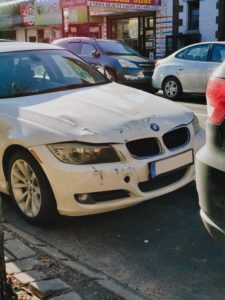The Hidden Danger of Blind Spot Accidents
Blind spots, also known as "no-zones," are areas around a vehicle that a driver cannot see with their eyes or mirrors. While these blind spots are an unfortunate reality of driving, understanding how to recognize and mitigate their risks can significantly reduce the likelihood of a serious accident.Understanding Blind Spots
All vehicles have blind spots, and larger vehicles tend to have bigger ones than smaller cars. The areas that are most difficult to see with a glance in the mirror include:- Behind the back bumper
- Lower portions of windows on either side of the vehicle
- Directly beside the vehicle, especially if it is a tall vehicle such as an SUV or truck
- Near the back corners of the vehicle
Reducing the Risk of Blind Spot Accidents
The most effective way to reduce the risk of blind spot-related accidents is simple: Turn your head and look for other road users before merging, changing lanes, or turning. By looking over your shoulder to check for other vehicles or pedestrians, you can more easily detect potential hazards that are otherwise out of view. Proper mirror usage can also go a long way in mitigating your blind spot risk. Before you start driving—even if you're just taking a short trip down the road—take a few moments to adjust your rearview and side mirrors for maximum visibility. You may also want to invest in convex mirrors, which give you a wider view of the area around your vehicle, or an additional blind spot mirror that attaches to your side view mirror and helps you better detect vehicles in adjacent lanes. Furthermore, it pays to be mindful of your driving habits. Driving at safe speeds, avoiding abrupt movements or turns, and signaling when merging are all integral parts of blind spot safety. Be aware of other drivers' blind spots, too—maintaining a safe distance can help ensure that other drivers have enough time to recognize and respond to your presence. Don't forget to look for pedestrians and bicyclists when making right turns; they are smaller and can blend seamlessly into the background of the road. However, you can cause far more damage when you're involved in a blind-spot accident with a bicyclist or pedestrian, so safety must always be your top priority. Above all, being aware of your surroundings and the vehicles around you is key to reducing blind spot risks. By remaining vigilant and driving with caution, you can drive more confidently knowing that these hidden dangers are less likely to cause a serious accident.



Speak Your Mind